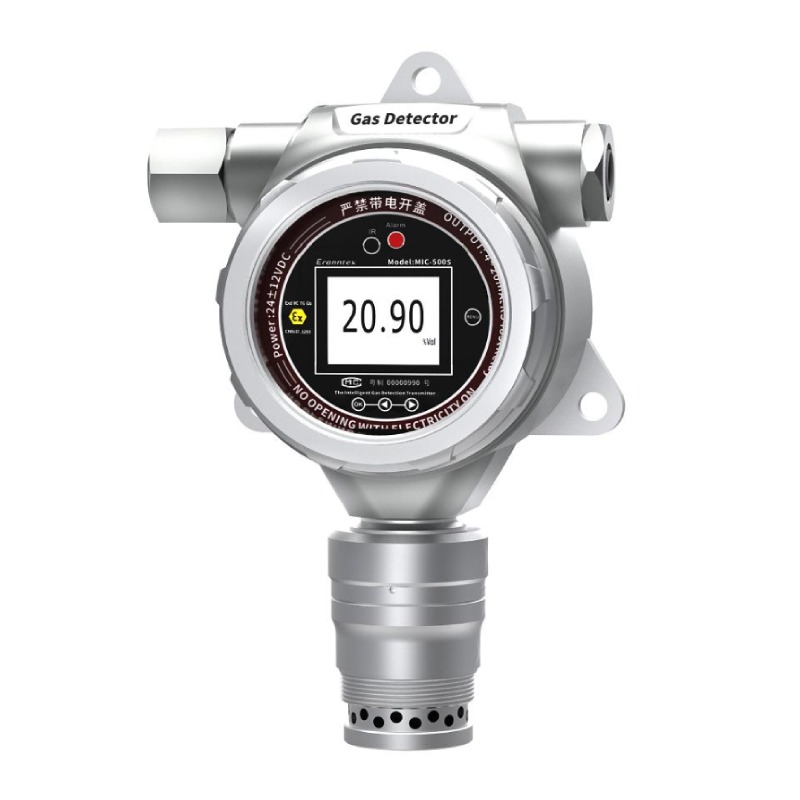- English
- Español
- Português
- русский
- Français
- 日本語
- Deutsch
- tiếng Việt
- Italiano
- Nederlands
- ภาษาไทย
- Polski
- 한국어
- Svenska
- magyar
- Malay
- বাংলা ভাষার
- Dansk
- Suomi
- हिन्दी
- Pilipino
- Türkçe
- Gaeilge
- العربية
- Indonesia
- Norsk
- تمل
- český
- ελληνικά
- український
- Javanese
- فارسی
- தமிழ்
- తెలుగు
- नेपाली
- Burmese
- български
- ລາວ
- Latine
- Қазақша
- Euskal
- Azərbaycan
- Slovenský jazyk
- Македонски
- Lietuvos
- Eesti Keel
- Română
- Slovenski
- मराठी
- Srpski језик
How Can Diesel Storage Areas Be Protected from Risks Using Gas Detectors? Key Points Here.
2025-09-19
Diesel is a core energy source for industrial production, logistics, and transportation. However, its volatility during storage presents a potential safety hazard. If volatile oil and gas leak and concentrations reach the lower explosion limit, exposure to ignition sources such as open flames or static electricity could cause fires and explosions, resulting in not only property damage but also the lives of on-site personnel. Therefore, the standardized deployment and use of gas detectors in diesel storage areas is a key measure for preventing oil and gas leaks. Below, our editors at Zetron Technology will outline the key points for using gas detectors in diesel storage areas, from selection and installation to maintenance.

1. Accurate Selection: Matching Diesel Gas and Gas Detection Requirements
Diesel is primarily composed of a mixture of C9-C18 hydrocarbons, a typical flammable gas. When selecting a gas detector, focus on the core requirement of "combustible gas detection." First, the instrument's measurement range must cover the lower explosive limit of diesel vapor, ensuring it can accurately capture leaks from low concentrations to hazardous levels. The sensor type can be selected based on actual operating conditions. Catalytic combustion sensors offer high sensitivity and fast response, making them particularly effective for detecting hydrocarbons like diesel and suitable for most common storage scenarios. If diesel contains high levels of impurities such as sulfur and nitrogen, which can easily poison the sensor, infrared sensors are recommended. They offer strong anti-interference capabilities and excellent long-term stability, preventing impurities from affecting detection accuracy. Furthermore, given the potential for humidity and high temperatures in diesel storage areas, the alarm system must have an appropriate protection level (e.g., IP65 or higher) to ensure proper operation in these challenging environments.
2. Scientific Layout: Eliminating Detection Blind Spots
Diesel vapor is denser than air and, upon leak, tends to settle near the ground. Furthermore, areas such as tank breather valves, pipe connections, and loading/unloading ports are high-risk areas for leaks. These two characteristics should be considered when placing the alarm system. First, alarms must be installed within 1 meter of leak points, such as breathing valves, pipe connections, and loading/unloading ports, to ensure that leaking oil and gas are detected as soon as they occur. Second, the alarms must be installed at a height of 0.3-0.6 meters above the ground, consistent with the characteristics of oil and gas accumulation below the surface, to avoid missed detections due to excessive height. Furthermore, the spacing between alarms throughout the storage area should not exceed 7.5 meters. Alarms can be evenly distributed according to the area and layout of the storage area to ensure coverage and eliminate blind spots.
3. Standard Installation: Eliminate Installation Hazards
When installing a gas alarm, strictly adhere to safety standards to avoid risks caused by improper operation. Before installation, inspect the instrument for appearance and accessories, ensuring there is no damage or malfunction before proceeding. Ensure the instrument is securely fastened to prevent subsequent vibration or impact, which could cause it to shift and affect detection accuracy. Wiring connections are crucial. All wiring must be waterproof and corrosion-resistant. Explosion-proof junction boxes and conduit must be used during wiring to prevent aging and short circuits, which can cause sparks and potentially come into contact with leaking oil and gas, potentially posing a risk. Furthermore, the alarm should be installed away from direct sunlight and strong magnetic fields to minimize the impact of environmental factors on instrument performance.
4. Comprehensive Commissioning: Ensuring Proper Instrument Functionality
After installation, the gas alarm cannot be put into use directly. Comprehensive commissioning is required to ensure accurate detection and reliable alarms. Commissioning includes zero calibration, span calibration, and setting alarm thresholds. First, perform zero calibration with pure air to ensure accurate baseline data. Then, perform span calibration with standard gas compatible with diesel and gas to verify that the instrument's detection data error is within acceptable limits. Finally, set appropriate alarm thresholds based on the lower explosion limit of diesel and gas (typically divided into primary and secondary alarms, with primary at 20%-30% of the lower explosion limit and secondary at 50% of the lower explosion limit) to ensure timely warnings when concentrations exceed the specified limit. Keep records during the commissioning process. If any problems such as inaccurate data or insensitive alarms are discovered, the instrument must be adjusted or replaced immediately.
5. Regular Maintenance: Keeping the Instrument in Good Condition
The long-term and stable operation of gas alarms requires regular maintenance. Companies should establish a comprehensive maintenance system: Perform a monthly visual inspection and cleaning of the instrument to remove surface dust and oil, and check for loose connections. Perform performance testing and calibration quarterly, using standard gas to verify instrument accuracy. If the error exceeds the allowable range, calibrate or replace the sensor promptly. If an instrument malfunction is detected (such as an abnormal display or malfunctioning alarm), the instrument must be shut down for immediate inspection and maintenance. Do not operate the instrument while it is faulty. Detailed records of each inspection, calibration, and repair during maintenance should be kept to facilitate subsequent tracing of the instrument's operating status and analysis of potential issues.
6. Personnel Training: Improving Emergency Response Capabilities
The key to the effectiveness of the instrument lies in its personnel. Specialized training must be provided to personnel working in diesel storage areas. Training should cover the basic operation of gas alarms, the meaning of alarm signals (such as the risk levels represented by level 1 and level 2 alarms), and emergency response procedures. When an alarm sounds, personnel must know how to quickly identify the leak, activate ventilation to reduce concentrations, and evacuate personnel and report the incident, ensuring that risks are contained immediately. Regular drills should also be conducted to familiarize personnel with emergency procedures and avoid delays caused by panic in emergency situations.
In short, gas alarms in diesel storage areas are not simply a matter of installation; every step, from selection to maintenance, is crucial. Only through precise selection, scientific layout, standardized installation, comprehensive commissioning, and regular maintenance, coupled with professional operation by personnel, can gas alarms truly serve as "safety sentinels," providing timely warnings of oil and gas leak risks, building an impenetrable defense for the safe operation of diesel storage areas, and safeguarding lives and property.







